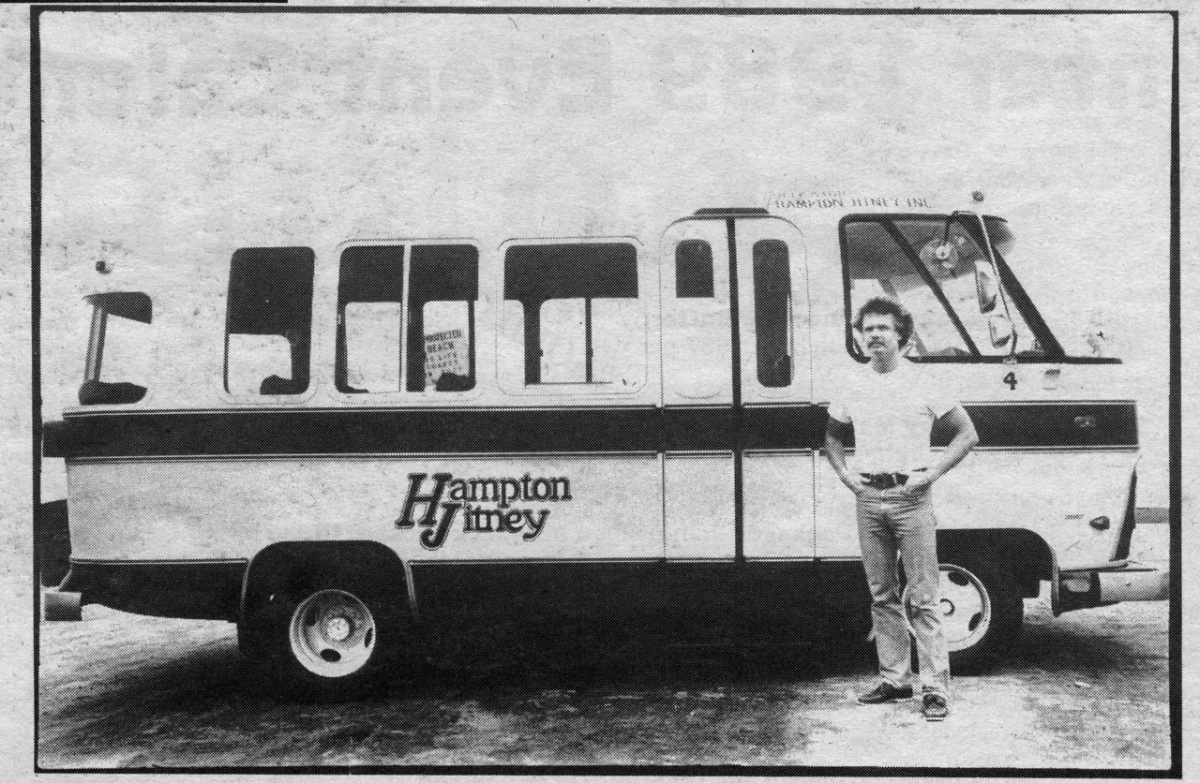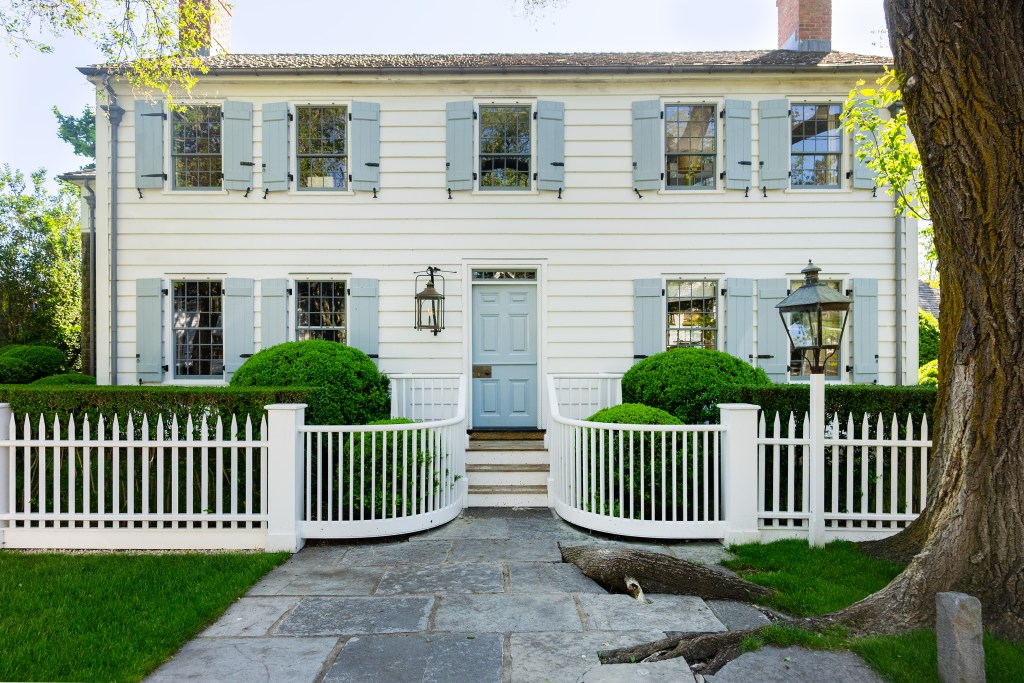How the Hampton Jitney Got Its Name

Definition of Jitney: 1. An unlicensed taxicab. 2. A small bus that carries passengers over a regular route on a flexible schedule. 3. Slang for ‘nickel.’
Jim Davidson, a young entrepreneur living in Water Mill, got the idea for the Hampton Jitney. But it wasn’t for buses that would go back and forth between the Hamptons and Manhattan. Jim’s idea, in 1973, was to have several 10-passenger vans travel back and forth along the Montauk Highway between Southampton and Amagansett, pulling a bicycle rack on wheels. You’d hail it anywhere along the way with just a wave. You’d put your bike in the rack, climb in and go to the next Hampton, get off and bike to where you wanted to go. The Hampton Jitney busses would appear at half-hour intervals. You’d pay 25¢ per town. It would be a big hit. But it wasn’t.
Anyway, in the summer of 1974, he tried it. A huge gas crisis was happening everywhere in America. There were long lines at the few gas stations that had gas. And the price had gone up five times from the year before. President Ford said we’d have to make do. We needed to use less gas and oil. “Don’t run your dishwasher until it is completely filled with dishes,” he famously said.
Jim was a close friend of mine, and I tried to help him with his service. Three months after it began, I wrote an editorial. “From the window of my office on the Montauk Highway, I can watch the Hampton Jitney bus service rumble by. As near as I can see, only a few people are using it. Here is a method for getting from any one spot to any other on the Montauk Highway for just 25¢. Give it a try.”
Jim tried the service a second year, adding stops not only on the highway but also at the beaches. He stopped at Coopers Beach in Southampton before downtown, Main Beach in East Hampton, Indian Wells Beach in Amagansett and Asparagus Beach, also in Amagansett. That is Atlantic Avenue beach today. They called it Asparagus Beach back then because it was a beach where young singles, drinks in hand, stood and mingled rather than lay on towels. Like a field of asparagus, somebody said.
In the third year, 1976, Jim continued with the service, but then, for the first time, he also quietly offered a minivan that would leave the Hamptons at 11 a.m. and go to New York City, arriving at the Upper East Side around 1:30 p.m. It carried 10 passengers, all of whom chatted away as if they were at a party on wheels. They were serviced coffee and returned at 7. This was a stunning success. There were waiting lists to use that trip, and so he added a second, which left Southampton at 3 p.m., then stayed overnight and came back the next day, leaving at 2 p.m. And thus Hampton Jitney, as we know it today, was born.
By 1978, with the up-and-down-the-highway route quietly abandoned, six vans were going back and forth between the Hamptons and New York City every day. But the permission given from the city had been only to allow vehicles with a maximum of 23 passengers each.
“Jim Davidson’s mini-bus is cool, comfortable and relaxing,” I wrote. “It is the civilized way to get from the Hamptons into Manhattan and this newspaper would like to encourage readers to use it when the opportunity arises.”
In early January 1979, Jim applied to the powers that be in Manhattan to allow him to use full 39-passenger luxury busses for the back and forth to New York. He would provide snacks and drinks onboard, and there would be an attendant. The busses would have a bathroom in the back. A public hearing in Manhattan was held in March. A crowd of Hamptonites were there to plead the case with Jim. Nobody spoke against it. But a week after the hearing, Harold Fisher, the President of the MTA and the Long Island Rail Road, wrote a letter, objecting. He said it would impact railroad service. So we had a second hearing. By April, the resolution passed.
The new full-size coaches were gorgeous. They were painted forest green. The art department at Dan’s Papers made a new logo for the Hampton Jitney, which remains in use today. The design came from Thom Speckenbach, the art director at the paper at the time.
Artist Roy Lichtenstein designed the wavy lines that added a final touch to the logo some years later. And some of the more well known riders volunteered radio commercials, praising the service. Lauren Bacall did a few. In those early busses, the second language on the interior signage was in French, considered a classy touch, I think. Later that second language was changed to Spanish.
Today, dozens and dozens of Hampton Jitney coaches ply back and forth between the Hamptons and New York City every day. Jim Davidson sold the company to Missy and Brent Lynch, whose sons Geoff and Andrew Lynch run it today. It is punctually on time almost every time, leaves and returns from Manhattan on almost an hourly basis, and now takes Hamptonites to Boston, and in the winter to both Florida and Stratton Mountain in Vermont. Guests are offered free snacks and soft drinks and, on the Jitney Ambassador luxury service, also wine. Earphones are offered to anyone who wants to watch the overhead movie. All this with daily bus cleanings and a special protocol for the COVID-19 crisis.
So that is how a jitney service that didn’t work became, a few years later, something that did. And how the Jitney got its name.
Interestingly, at the present time, the Hampton Jitney is testing an app called “Jitney Jumper,” where you can book a fare between the hamlets of Southampton to Montauk on the existing schedule. They are going back to their roots.



